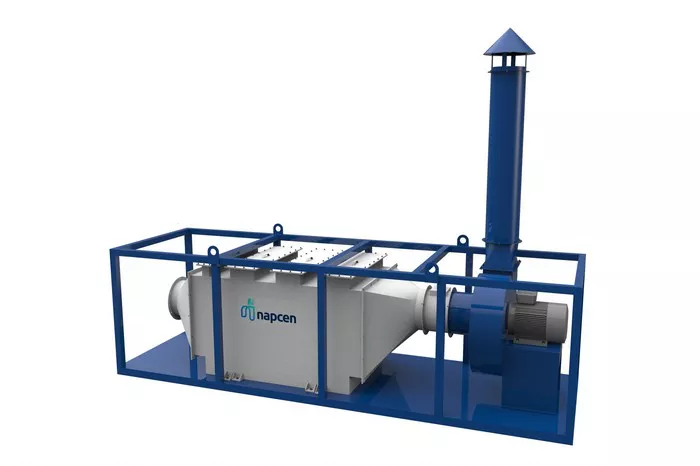Wet scrubbers are vital tools in various industries for controlling air pollution and removing harmful pollutants from gas streams. Understanding what wet scrubbers remove is crucial for optimizing their effectiveness in environmental protection and regulatory compliance. In this comprehensive guide, we’ll delve into the specifics of what wet scrubbers can eliminate, their applications, and how they function.
What Do Wet Scrubbers Remove?
Wet scrubbers are highly effective at removing various pollutants from industrial exhaust gases, including:
1. Particulate Matter (PM): Wet scrubbers efficiently capture particulate matter suspended in gas streams. These particles can range from large dust particles to fine aerosols. By using liquid droplets to trap particles, wet scrubbers prevent them from being released into the atmosphere.
2. Acid Gases: Acid gases such as sulfur dioxide (SO2) and hydrogen chloride (HCl) are common pollutants emitted from industrial processes like combustion and chemical production. Wet scrubbers utilize alkaline solutions such as lime or sodium hydroxide to neutralize acidic gases, forming harmless compounds like calcium sulfate or calcium chloride.
3. Gaseous Pollutants: Wet scrubbers can also remove various gaseous pollutants, including nitrogen oxides (NOx), ammonia (NH3), and volatile organic compounds (VOCs). These pollutants are often found in emissions from combustion processes and industrial activities. Wet scrubbers either chemically react with these compounds or absorb them into the liquid phase.
4. Heavy Metals: Certain wet scrubber configurations can effectively capture heavy metals such as mercury, lead, and cadmium from gas streams. These toxic metals are typically associated with industrial processes like coal combustion and metal smelting. Wet scrubbers help prevent their release into the environment.
Applications of Wet Scrubbers:
Wet scrubbers find wide-ranging applications across industries, including:
1. Power Generation: Power plants utilize wet scrubbers to control emissions of sulfur dioxide (SO2) and nitrogen oxides (NOx) from combustion processes, ensuring compliance with environmental regulations and minimizing air pollution.
2. Chemical Processing: Wet scrubbers are integral to chemical manufacturing facilities for removing hazardous gases and particulates generated during production processes, safeguarding air quality and worker safety.
3. Metals Refining: Industries involved in metal refining and processing rely on wet scrubbers to capture particulates and heavy metals released during smelting and refining operations, mitigating environmental impact and complying with emission standards.
4. Waste Incineration: Waste-to-energy facilities use wet scrubbers to control emissions of pollutants such as hydrogen chloride (HCl) and dioxins from incineration processes, reducing environmental contamination and ensuring public health protection.
How Do Wet Scrubbers Work?
Wet scrubbers operate on the principle of contact between gas and liquid phases, typically water or an alkaline solution. The key components of a wet scrubber system include:
1. Scrubbing Chamber: This is where the gas stream comes into contact with the liquid, allowing pollutants to be absorbed or chemically reacted with the scrubbing solution.
2. Spray Nozzles: Liquid is dispersed into the scrubbing chamber through spray nozzles, creating a fine mist that maximizes contact surface area between the gas and liquid phases.
3. Packing Material or Tray Towers: These components enhance gas-liquid contact by providing a large surface area for interaction. Packing material can include structured packing, random packing, or trays.
4. Mist Eliminators: After the gas stream passes through the scrubbing chamber, mist eliminators remove excess liquid droplets from the cleaned gas before it is discharged into the atmosphere.
5. Collection and Disposal System: Pollutants captured by the scrubbing solution are collected and disposed of properly, often through wastewater treatment processes or solid waste management.
Conclusion:
In conclusion, wet scrubbers are indispensable tools for mitigating air pollution and ensuring environmental compliance across various industries. By effectively removing particulate matter, acid gases, gaseous pollutants, and heavy metals from gas streams, wet scrubbers play a critical role in safeguarding air quality and public health. Understanding the capabilities and applications of wet scrubbers is essential for implementing robust pollution control strategies and meeting regulatory requirements.
FAQs:
Q1. How do wet scrubbers compare to other air pollution control devices?
A1: Wet scrubbers offer several advantages over other air pollution control devices such as electrostatic precipitators (ESPs) and fabric filters. While ESPs and fabric filters are primarily designed for particulate matter removal, wet scrubbers can effectively capture both particulates and gaseous pollutants. Additionally, wet scrubbers can handle high temperatures and corrosive gases, making them suitable for a wide range of industrial applications.
Q2. Are there any limitations to wet scrubber efficiency?
A2: While wet scrubbers are highly efficient in removing pollutants, their performance may be influenced by factors such as gas flow rate, liquid-to-gas ratio, and the chemical properties of the pollutants. Inadequate design or maintenance of wet scrubber systems can result in inefficiencies or operational issues. Regular monitoring and optimization are necessary to ensure optimal performance.
Q3. Can wet scrubbers be used for odor control?
A3: Yes, wet scrubbers can be employed for odor control in industrial processes where foul odors are generated. By introducing odor-neutralizing agents into the scrubbing solution, wet scrubbers can effectively remove odorous compounds from gas streams, helping to mitigate nuisance odors and maintain a pleasant working environment.

